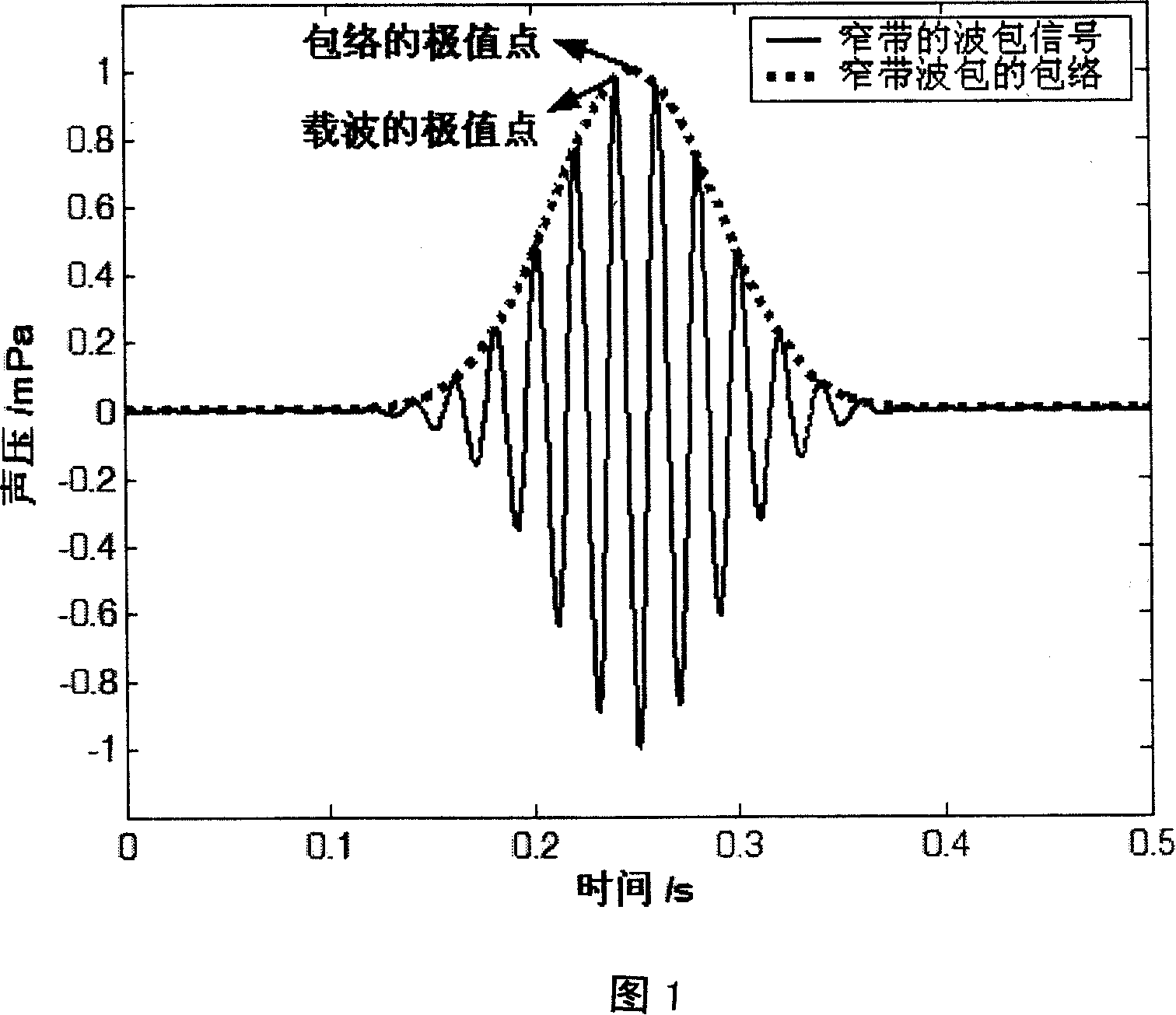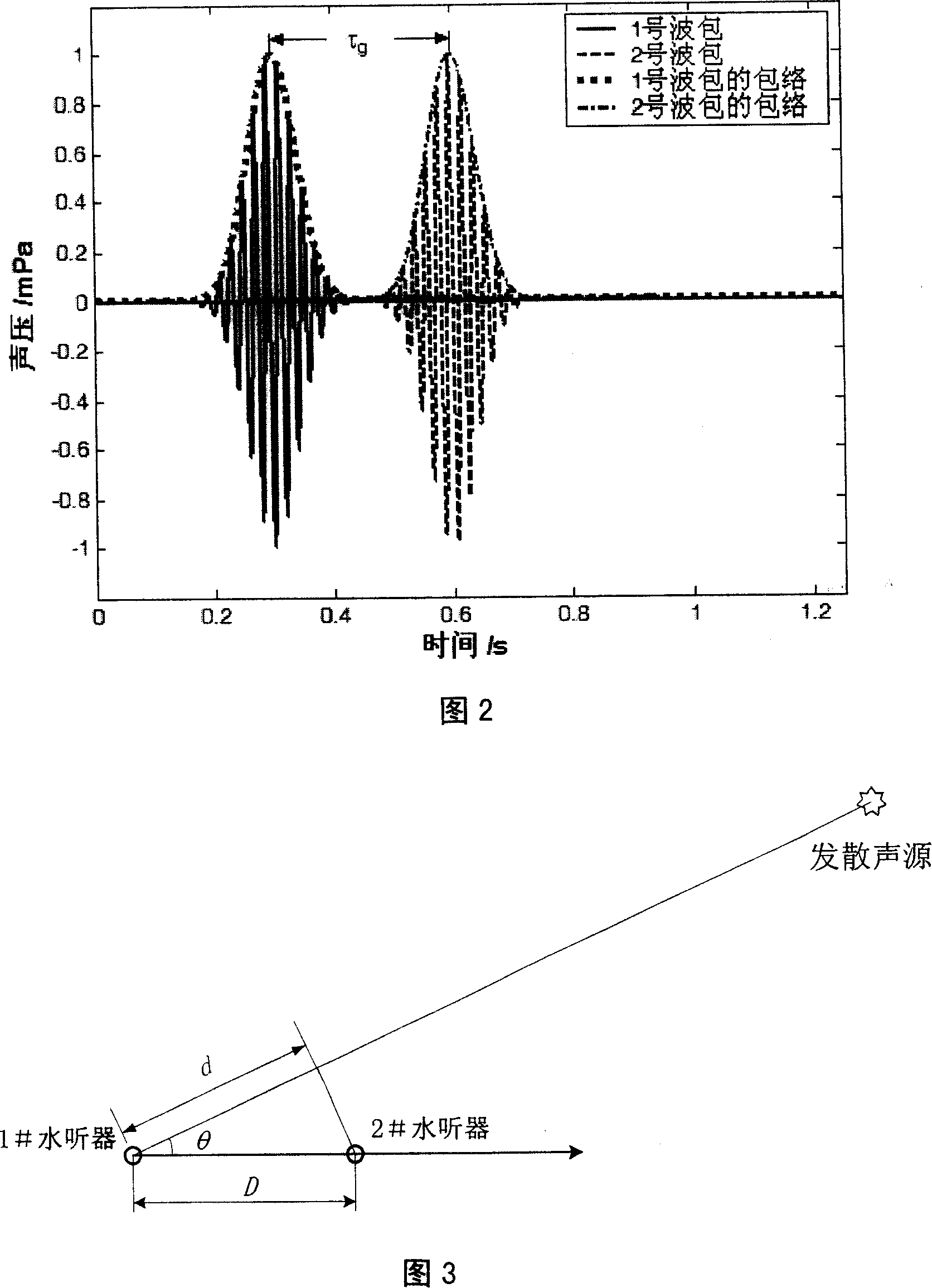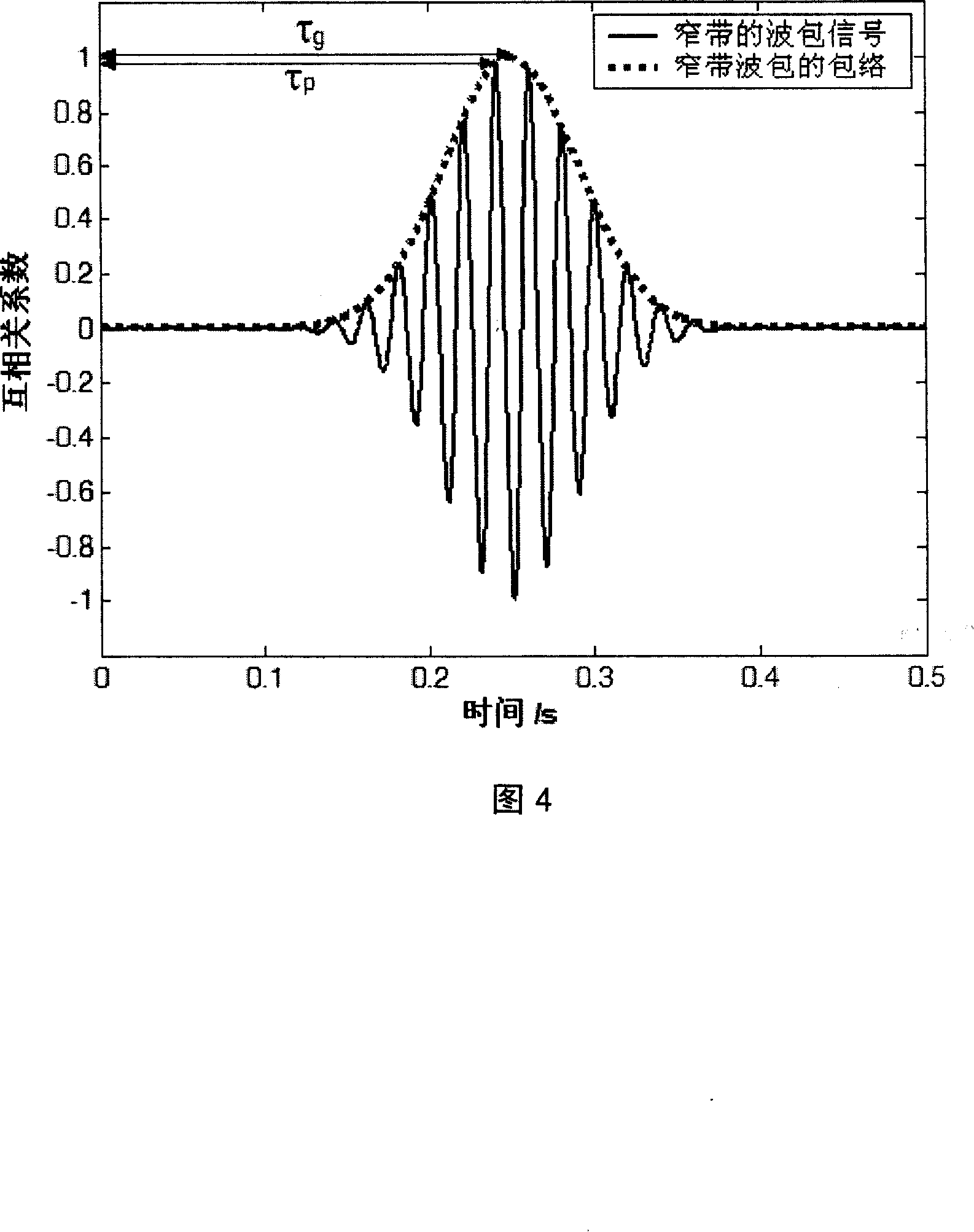Hydrophone test approach for ocean sound field phase velocity
A hydrophone and phase velocity technology, applied in the direction of measuring propagation velocity, instruments, measuring devices, etc., can solve the problems of impossible ocean sound field phase velocity test, difficulty in determining the reference phase, and high cost of acquisition
- Summary
- Abstract
- Description
- Claims
- Application Information
AI Technical Summary
Problems solved by technology
Method used
Image
Examples
Embodiment 1
[0077] Embodiment 1 uses 2 test ships to complete the ocean acoustic field phase velocity test
[0078] As shown in Figure 6, two test ships are used to complete the ocean acoustic field phase velocity test: one ship is used to receive signals, which is called the receiving ship, and the other ship is responsible for transmitting broadband pulses, called the transmitting ship.
[0079] The receiving ship deploys the hydrophone array on the seabed and connects it with the data acquisition system on the ship through a transmission cable. The number of hydrophones in the array is not limited, but it should be ensured that the distance of each pair of hydrophones used to calculate the phase velocity along the transmission pulse propagation direction satisfies the constraints of formula (11). The transmitting ship transmits the signal, and the receiving ship receives the signal, processes the signal, and obtains the test result. The test steps are as follows:
[0080] 1) Park the...
Embodiment 2
[0086] Embodiment 2 is completed by cooperating with fixed buoys and launching ships
[0087] As shown in Figure 7, two hydrophones are deployed on the buoy platform in the water, and the buoy is anchored to the seabed. The hydrophone is connected to the buoy, and the launching ship sends a communication command in advance to start the buoy to perform the phase velocity test working state, and then transmits a pulse signal, and the buoy receives the signal through N (N>2) hydrophone arrays, and processes the signal to obtain different The phase velocity curve of the normal wave, and finally the processing results are sent to the base station wirelessly. This method is suitable for the application background of long-term monitoring of fixed sea areas for existing buoy platforms. The test steps are as follows:
[0088] 1) Park the launching ship in the sea area required for testing, more than 2km away from the hydrophone of the buoy.
[0089]2) The launching ship sends a comm...
PUM
 Login to View More
Login to View More Abstract
Description
Claims
Application Information
 Login to View More
Login to View More - R&D
- Intellectual Property
- Life Sciences
- Materials
- Tech Scout
- Unparalleled Data Quality
- Higher Quality Content
- 60% Fewer Hallucinations
Browse by: Latest US Patents, China's latest patents, Technical Efficacy Thesaurus, Application Domain, Technology Topic, Popular Technical Reports.
© 2025 PatSnap. All rights reserved.Legal|Privacy policy|Modern Slavery Act Transparency Statement|Sitemap|About US| Contact US: help@patsnap.com



